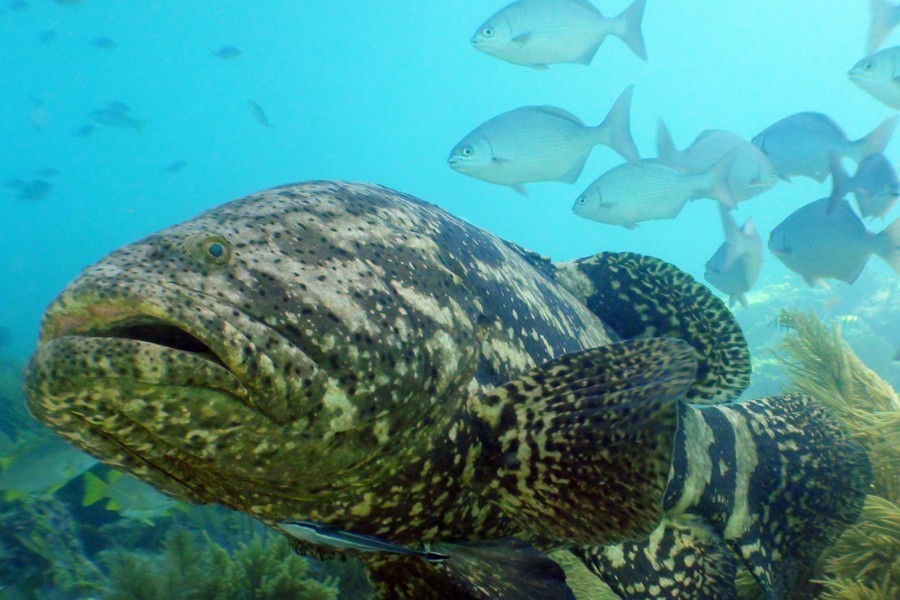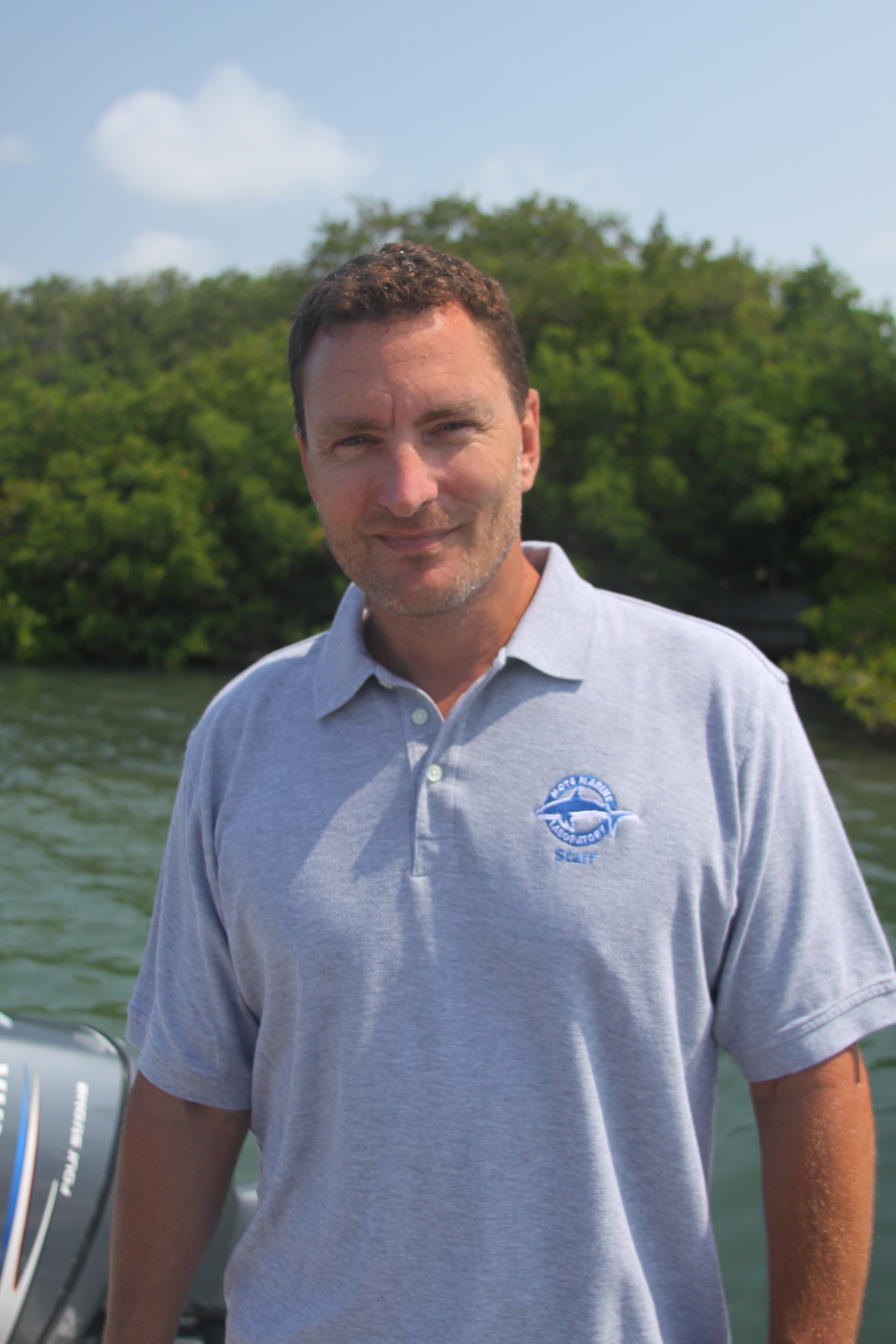Mote receives grant for novel acoustic study of protected grouper
Mote Marine Lab scientists plan to “listen” to mating aggregations of protected grouper species by combining two acoustic techniques in a new way, advancing research to benefit depleted and recovering fish stocks.
Dr. James Locascio, Staff Scientist at Mote, was recently awarded a Marine Fisheries Initiative (MARFIN) Program grant provided by the National Marine Fisheries Service (NMFS) to study protected populations of goliath grouper by combining sonar data with recordings of fish sounds — two key types of information normally collected separately. Learning to combine these acoustic data could provide a new quantitative way to study fish spawning aggregations.
The grant totals $306,921 for two years of research starting Sept. 1, 2015. The project will focus on documenting goliath grouper aggregation sites off Jupiter on Florida's Atlantic coast and Lee County on the Gulf coast. It will also focus on a Marine Protected Area in North Carolina used by other grouper species, to monitor for recovery of snowy grouper and document the presence of other species. Projects funded under the competitive MARFIN program seek to pave the way to rebuild overfished marine fisheries, maintain currently productive fisheries and integrate conservation of protected species.
Goliath grouper and several other reef fishes of ecological, recreational and commercial importance reproduce in large groups known as spawning aggregations, making them particularly vulnerable to mass harvesting. Goliath grouper populations were in serious decline by the late 1980s due to overfishing. Today the species shows signs of recovery but remains protected from harvest in the U.S. and is considered “critically endangered” by the International Union for Conservation of Nature (IUCN).
The MARFIN grant will allow Locascio to conduct research that aims to further understand where and when these fish aggregate and what type of habitat supports them — critical information for ensuring population recovery.
“NMFS, Southeast Region, is pleased to provide this award to Dr. Locascio and looks forward to getting semi-annual reports on (the study's) progress,” said Robert Sadler, Fisheries Grants Program Officer.
Locascio plans to combine two different methods used to survey fish spawning sites — passive and active acoustics. Acoustic technology is important for studying reproductive activity, abundance, distribution and behavior of marine organisms.
Active acoustics research uses sonar transducers, which emit an acoustic signal, often called a "ping," or pulse of sound into the water. Sonar is used to estimate the abundance of fish, but it cannot identify the species.
Passive acoustics research involves recording the ambient sounds of spawning fishes. Because different species produce different sounds, passive acoustics can be used to identify species and document the timing and location of their reproduction.
“Active and passive acoustics are commonly used, but they have not been used together in this context, as far as I know,” Locascio said. "I am very grateful for this grant, which will allow us to explore the utility of an integrated acoustic research method to gain greater insight into the population dynamics of sound producing fish species at spawning aggregation sites."
“I see this as an opportunity to learn more and hopefully lay the groundwork for further research and save other scientists time by combining these two methods.”
One goal of this research project is to generate an
index that will allow researchers to determine abundance and biomass of grouper species based on sound production. It will also help determine spawning aggregation sites for grouper, which is critical in assessing and managing populations and habitats of this species.
To ground-truth acoustic data, dive surveys will be conducted to confirm species presence and abundance at each study site.
Locascio, whose background focuses on passive acoustics, will collaborate in this project with Dr. Kevin Boswell, Assistant Professor at Florida International University, a prominent researcher in active acoustics.
Tagging and tracking fish is another method that the project will use to monitor how grouper move during spawning events. For example, they may swim from shallower water to deeper water to spawn once the sun goes down. Researching this information will lead to a better understanding of fish spawning aggregations, which will help protect the habitats and sites most important to grouper and other protected species used for reproduction.
“This grant is a stepping stone to understanding how effective a combined acoustic approach will be for evaluating fish stocks on these spawning aggregation sites, and I hope that will lead to better assessments of production at these sites,” Locascio said.

